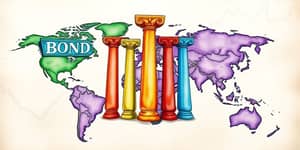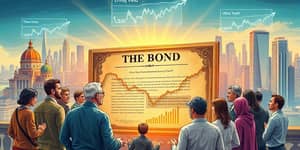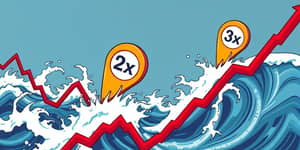
In today’s fast-paced financial world, investors seek powerful yet simple strategies to grow their wealth. ETFs have emerged as a transformative force, democratizing investment opportunities worldwide and reshaping how individuals engage with markets.
At their core, ETFs are baskets of securities—stocks, bonds, commodities, or currencies—that trade on public exchanges like individual stocks. Most ETFs passively mirror well-known indices, such as the S&P 500, offering investors
instant exposure to entire market segments without the complexity of picking individual securities. Others are actively managed, seeking to outperform benchmarks. Whether aiming for broad-market coverage, sector focus, or thematic trends, ETFs provide a versatile toolkit for any portfolio.
What makes ETFs so compelling is their unique blend of features that cater to both novice and seasoned investors. They combine the benefits of mutual funds, stocks, and index funds into one seamless vehicle.
Through a single transaction, an ETF investor can replicate the diversification of an entire market segment, instantly reducing the impact of any one security's volatility. This
instant diversification for risk mitigation was once only available to large institutional players, but ETFs have brought it to individual portfolios with minimal barriers to entry.
Their cost structure is equally appealing. With average operating expense ratios often below 0.10%, ETFs can outperform many actively managed mutual funds over the long term. Add to this
zero-commission trades at leading brokerages, and the potential for net returns becomes even more attractive. Intraday pricing also empowers investors to react swiftly to market events, a flexibility mutual funds lack.
Transparency is another cornerstone of the ETF model. Most ETFs disclose their holdings on a daily basis, allowing investors to know exactly what they own at any time. This
full visibility into fund composition builds confidence and aids in precise portfolio construction. Moreover, the in-kind creation and redemption mechanism not only fuels liquidity but also limits taxable distributions, delivering
greater tax efficiency than comparable mutual funds.
ETFs have witnessed explosive growth. Industry estimates project global ETF assets exceeding AU$300 billion in 2025, fueled by both retail and institutional inflows. Active ETFs now account for over half of new cash flows, signaling a shift toward more dynamic strategies within the ETF wrapper.
Investors are increasingly layering ETFs for core portfolio exposures and satellite strategies. ESG-focused ETFs, thematic funds tied to artificial intelligence, clean energy, and specialized sector bets have captured the imagination of the market, driving adoption across all demographics.
While ETFs offer remarkable advantages, investors must remain mindful of inherent risks. Market fluctuations can erode portfolio value, and sector- or theme-focused ETFs may experience sharper drawdowns during adverse conditions.
Tracking error, the divergence between an ETF’s performance and its benchmark, can occur due to fees or imperfect replication techniques. Thinly traded ETFs may widen spreads, increasing trading costs, and active ETFs can carry higher expenses and lower transparency than their passive counterparts.
Building a resilient, well-balanced portfolio with ETFs involves thoughtful planning and ongoing monitoring. Consider the following practical steps:
By combining core and satellite strategies, investors can tap into long-term market growth while capturing specialized opportunities. Rebalancing ensures portfolios remain aligned with risk tolerance, and cost-conscious choices amplify net returns over time.
Exchange-Traded Funds have revolutionized how individuals access global and niche markets. Their blend of diversification at scale, affordability, and flexibility makes them a go-to solution in modern investing. As the ETF landscape continues to evolve, with innovations in active management and thematic exposures, investors are well-positioned to craft portfolios that reflect both their aspirations and their values.
Whether you are taking your first steps in investing or seeking to optimize a seasoned portfolio, ETFs offer a streamlined path to achieving your financial goals. Embrace this powerful tool, and open the door to markets that once felt out of reach.
References













